A Lightweight Deep Learning Model for Identifying Weeds in Corn and Soybean Using Quantization †
Abstract
:1. Introduction
2. Methods
2.1. Dataset
2.2. Data Augmentation
2.3. Image Classification
2.4. Experimental Setup
3. Results and Discussion
4. Conclusions
Author Contributions
Funding
Institutional Review Board Statement
Informed Consent Statement
Data Availability Statement
Conflicts of Interest
References
- Lee, N.; Thierfelder, C. Weed control under conservation agriculture in dryland smallholder farming systems of southern Africa. A review. Agron. Sustain. Dev. 2017, 37, 48. [Google Scholar] [CrossRef]
- The Vocabulary Memorisation Strategy Before Entering the Classroom and the Usage of the Memorisation Card. Available online: https://journal.uin-alauddin.ac.id/index.php/Eternal/article/view/25018 (accessed on 10 August 2023).
- Dewi, N.; Ismawan, F. Implementasi deep learning menggunakan CNN untuk sistem pengenalan wajah. Faktor Exacta 2021, 14, 34–43. [Google Scholar] [CrossRef]
- Han, S.; Mao, H.; Dally, W.J. Deep compression: Compressing deep neural networks with pruning, trained quantization and Huffman coding. In Proceedings of the 4th International Conference on Learning Representations, ICLR 2016—Conference Track Proceedings, San Juan, Puerto Rico, 2–4 May 2016. [Google Scholar]
- Anwar, S.; Hwang, K.; Sung, W. Fixed point optimization of deep convolutional neural networks for object recognition. In Proceedings of the ICASSP, IEEE International Conference on Acoustics, Speech and Signal Processing—Proceedings, South Brisbane, QLD, Australia, 19–24 April 2015. [Google Scholar] [CrossRef]
- Jacob, B.; Kligys, S.; Chen, B.; Zhu, M.; Tang, M.; Howard, A.; Adam, H.; Kalenichenko, D. Quantization and Training of Neural Networks for Efficient Integer-Arithmetic-Only Inference. In Proceedings of the IEEE Computer Society Conference on Computer Vision and Pattern Recognition, Salt Lake City, UT, USA, 18–23 June 2018. [Google Scholar] [CrossRef]
- Hasan, S.M.M.; Sohel, F.; Diepeveen, D.; Laga, H.; Jones, M.G.K. Weed recognition using deep learning techniques on class-imbalanced imagery. Crop Pasture Sci. 2022. [Google Scholar] [CrossRef]
- Virmani, J.; Kumar, V.; Kalra, N.; Khandelwal, N. PCA-SVM based CAD system for focal liver lesions using B-mode ultrasound images. Def. Sci. J. 2013, 63, 478–486. [Google Scholar] [CrossRef]
- Tan, K.; Wang, D. Towards Model Compression for Deep Learning Based Speech Enhancement. IEEE/ACM Trans. Audio Speech Lang. Process. 2021, 29, 1785–1794. [Google Scholar] [CrossRef] [PubMed]
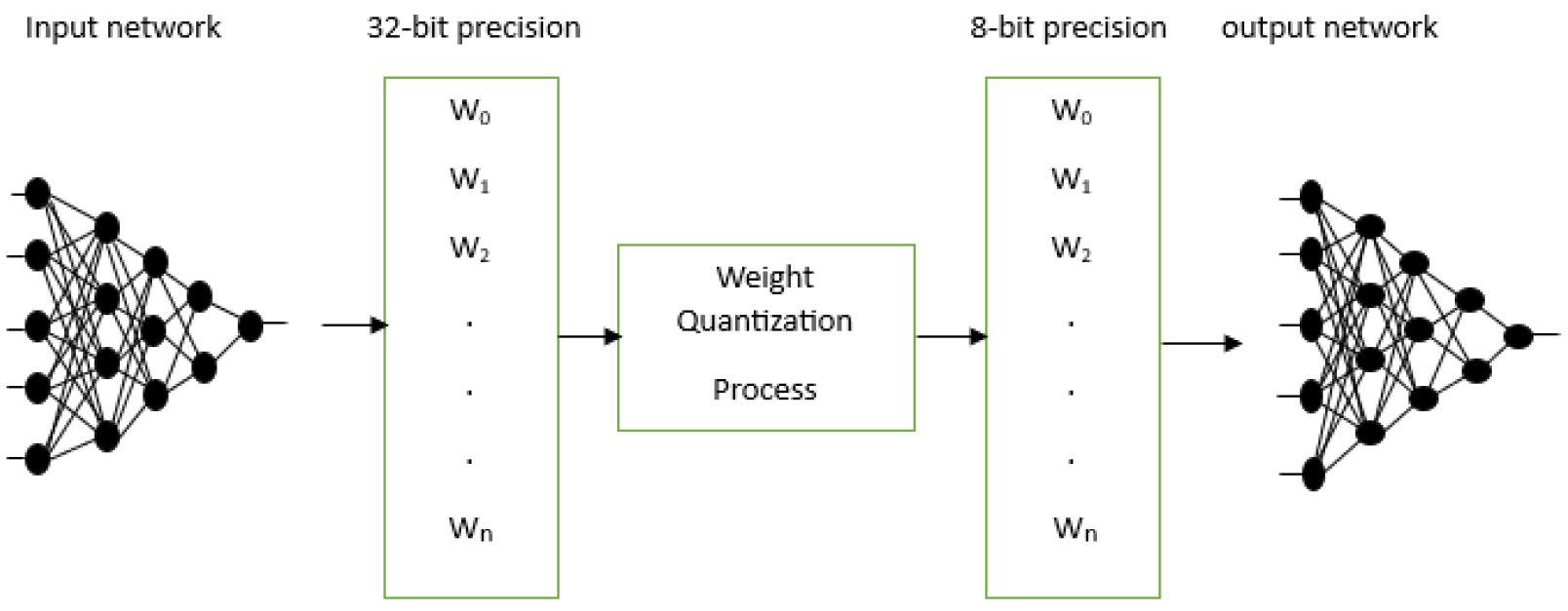
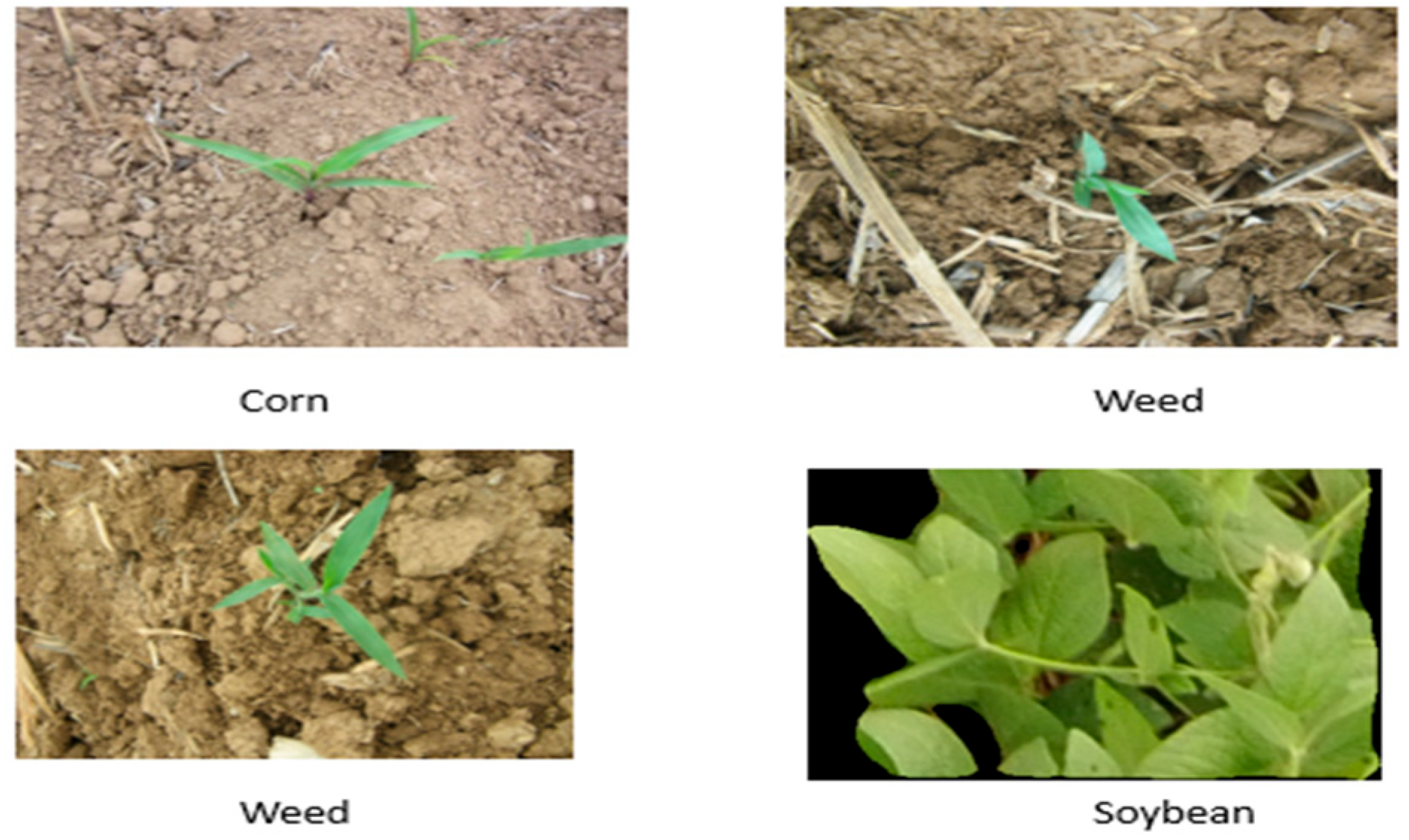

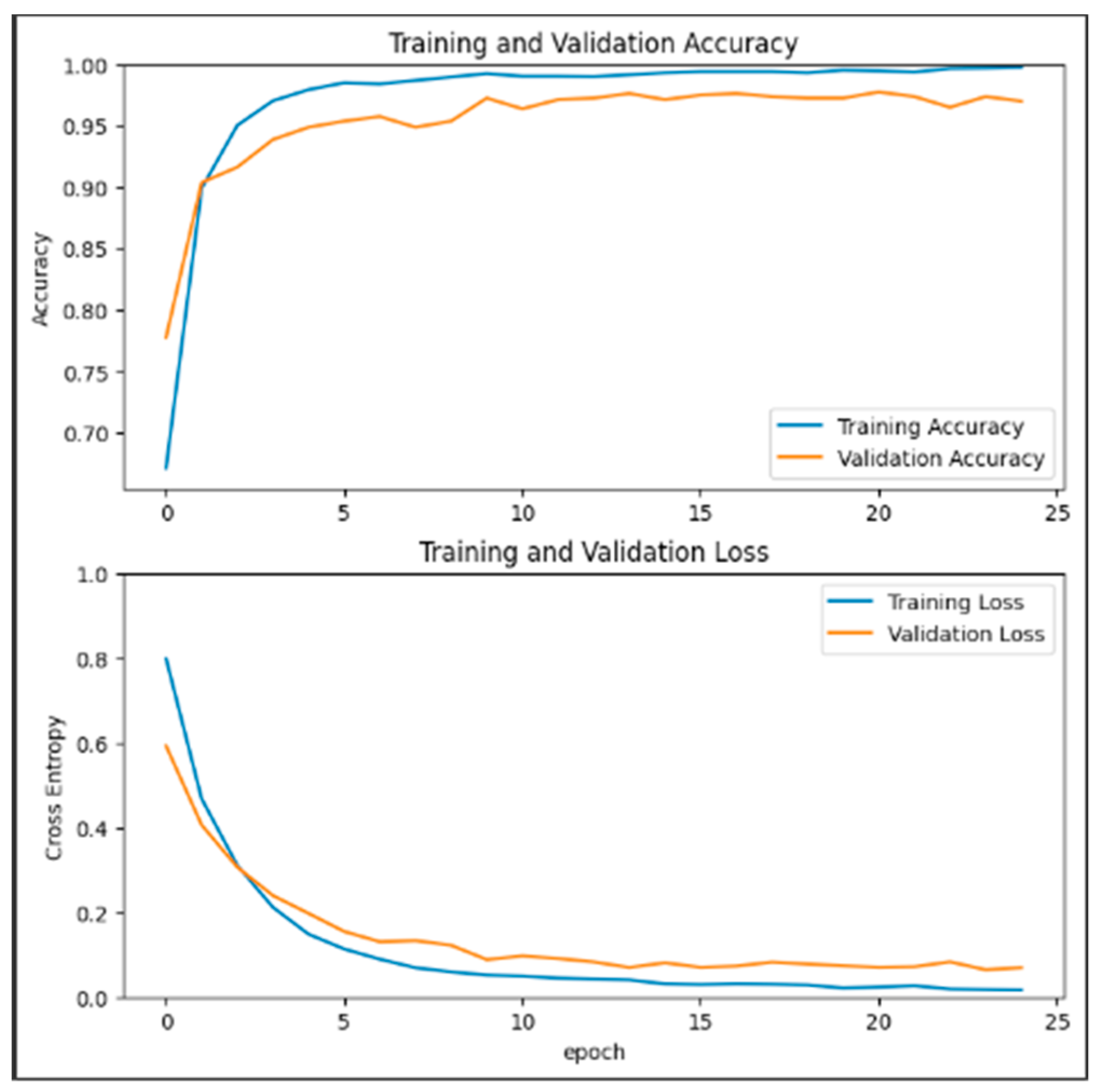
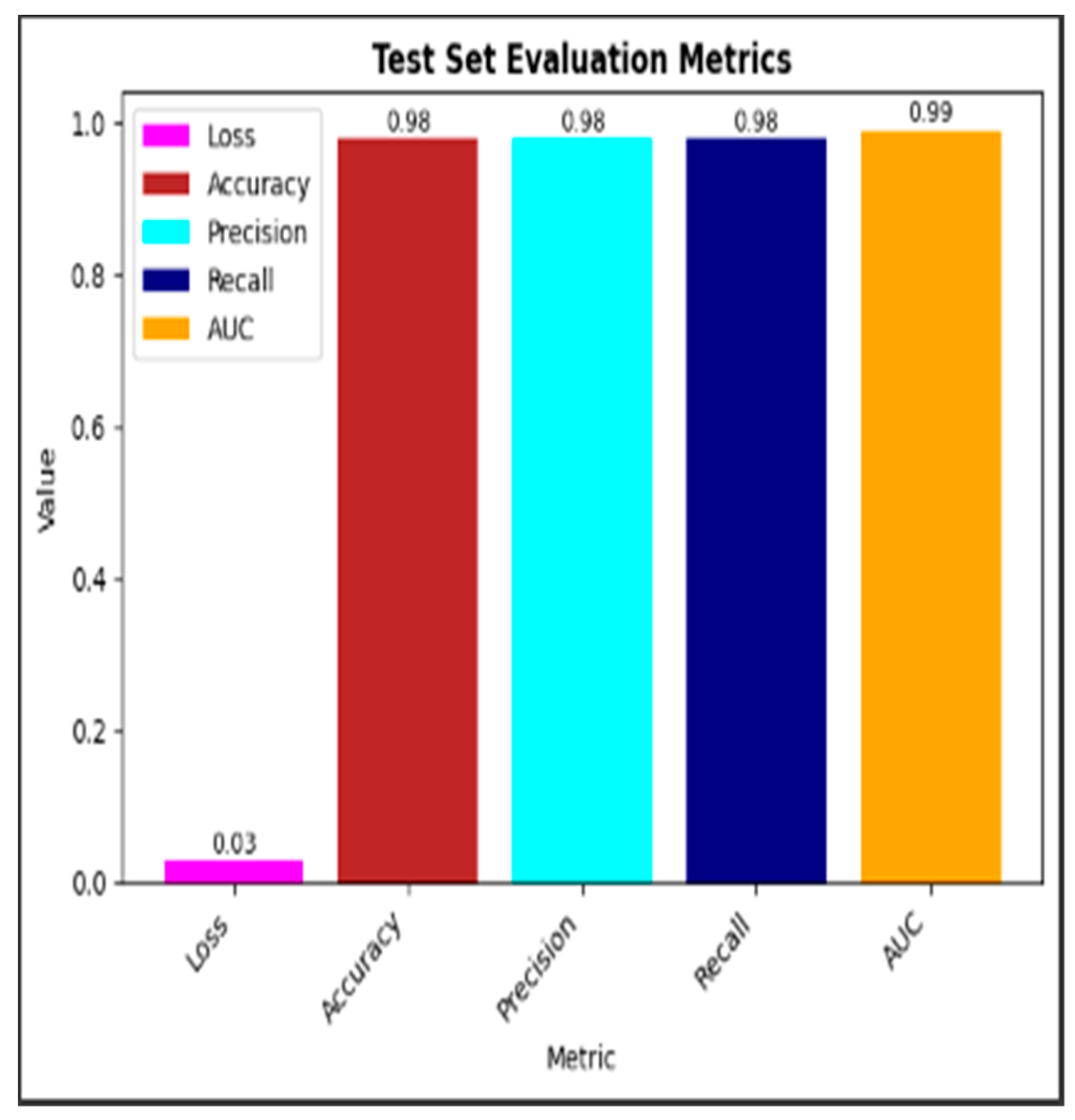
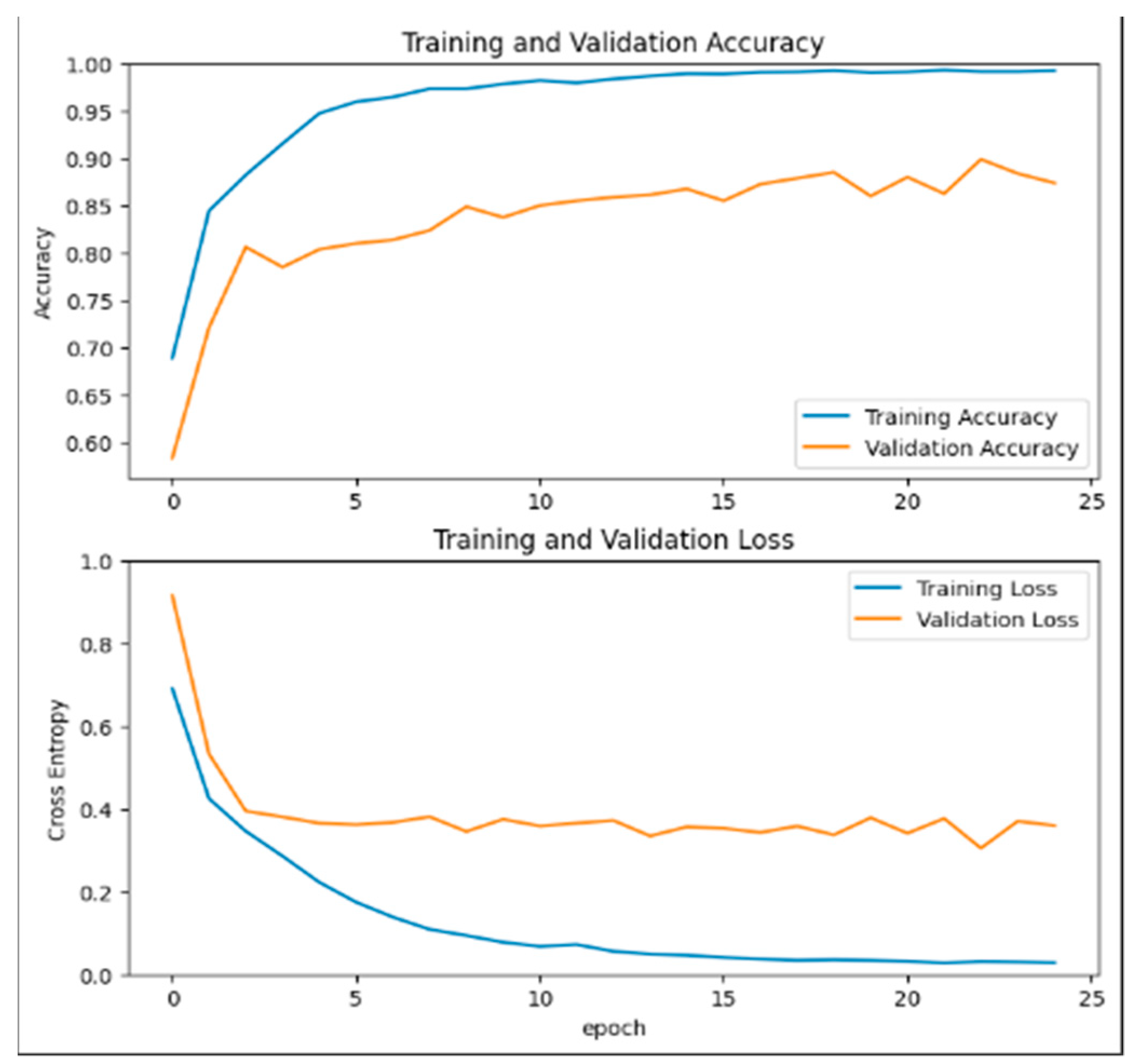
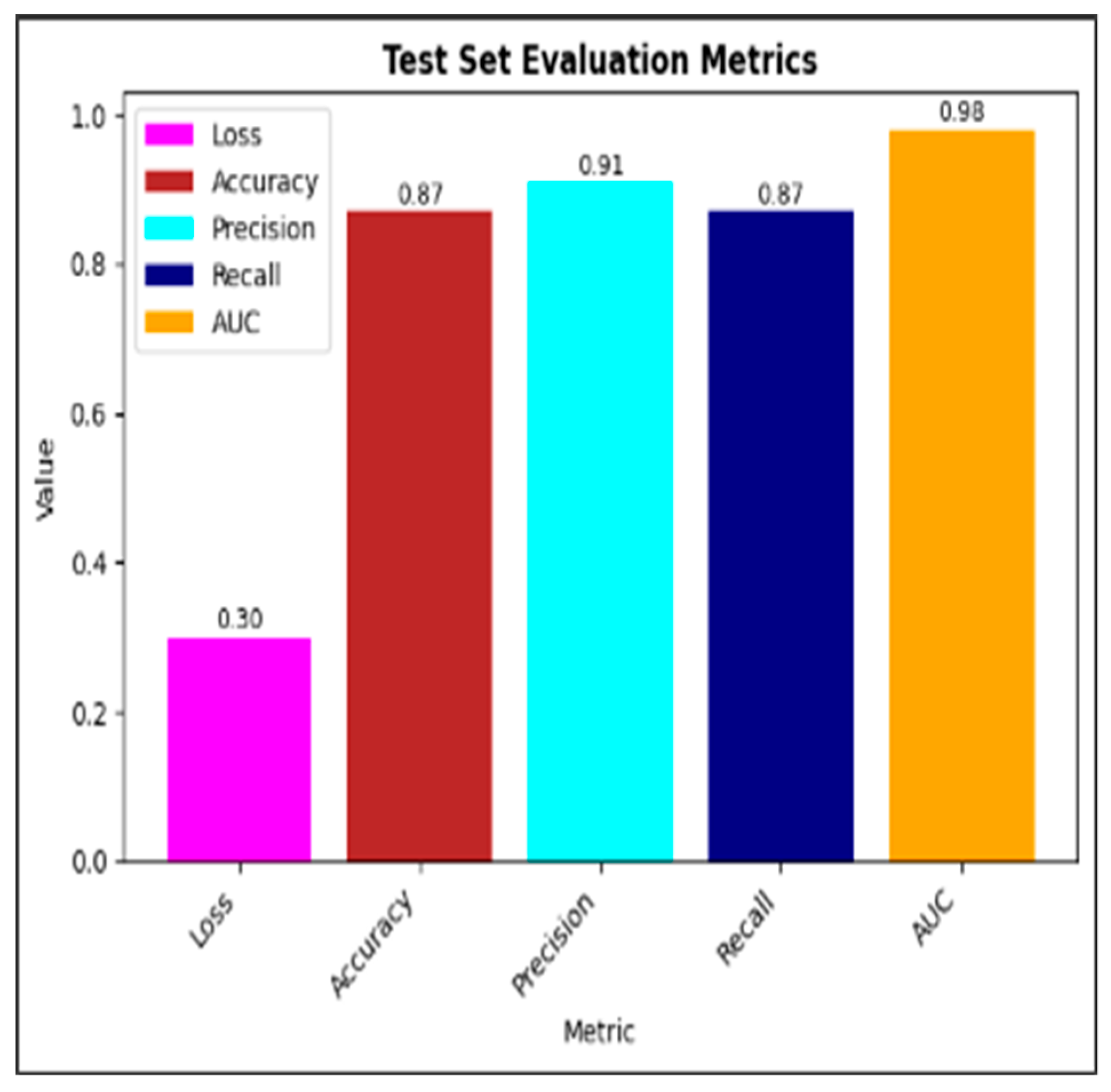
| Accuracy (%) | Precision (%) | F1-Score (%) | Recall (%) | AUC (%) | Model Size (MB) | |
|---|---|---|---|---|---|---|
| Base Model | 97 | 98 | 98 | 97 | 99 | 183 |
| Quantized Model | 87 | 91 | 90 | 87 | 98 | 23 |
Disclaimer/Publisher’s Note: The statements, opinions and data contained in all publications are solely those of the individual author(s) and contributor(s) and not of MDPI and/or the editor(s). MDPI and/or the editor(s) disclaim responsibility for any injury to people or property resulting from any ideas, methods, instructions or products referred to in the content. |
© 2023 by the authors. Licensee MDPI, Basel, Switzerland. This article is an open access article distributed under the terms and conditions of the Creative Commons Attribution (CC BY) license (https://creativecommons.org/licenses/by/4.0/).
Share and Cite
Aaron, A.; Hassan, M.; Hamada, M.; Kakudi, H. A Lightweight Deep Learning Model for Identifying Weeds in Corn and Soybean Using Quantization. Eng. Proc. 2023, 56, 318. https://doi.org/10.3390/ASEC2023-15811
Aaron A, Hassan M, Hamada M, Kakudi H. A Lightweight Deep Learning Model for Identifying Weeds in Corn and Soybean Using Quantization. Engineering Proceedings. 2023; 56(1):318. https://doi.org/10.3390/ASEC2023-15811
Chicago/Turabian StyleAaron, Alex, Muhammad Hassan, Mohamed Hamada, and Habiba Kakudi. 2023. "A Lightweight Deep Learning Model for Identifying Weeds in Corn and Soybean Using Quantization" Engineering Proceedings 56, no. 1: 318. https://doi.org/10.3390/ASEC2023-15811
APA StyleAaron, A., Hassan, M., Hamada, M., & Kakudi, H. (2023). A Lightweight Deep Learning Model for Identifying Weeds in Corn and Soybean Using Quantization. Engineering Proceedings, 56(1), 318. https://doi.org/10.3390/ASEC2023-15811







